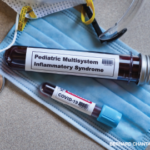 ACR CONVERGENCE 2020—Among the many ways in which the COVID-19 pandemic has changed the face of modern medicine is the emergence of multisystem inflammatory syndrome in children (MIS-C), a rare but serious condition that shares many features of Kawasaki disease (KD). With this topic in mind, leading pediatric experts from around the world came together Nov. 8 to deliver the presentation titled, Pediatric COVID-19 Hyper-Inflammation: Decipher Clues & Enhance Collaboration.
ACR CONVERGENCE 2020—Among the many ways in which the COVID-19 pandemic has changed the face of modern medicine is the emergence of multisystem inflammatory syndrome in children (MIS-C), a rare but serious condition that shares many features of Kawasaki disease (KD). With this topic in mind, leading pediatric experts from around the world came together Nov. 8 to deliver the presentation titled, Pediatric COVID-19 Hyper-Inflammation: Decipher Clues & Enhance Collaboration.
Differentiating MIS-C from KD
Angelo Ravelli, MD, a professor of pediatrics at the University of Genoa and head of the Rheumatology Division at the Giannina Gaslini Institute, Genoa, Italy, described the initial emergence in April 2020 of increased admissions at Italian hospitals of children with clinical symptoms and signs resembling KD. However, among these 149 patients, 53 showed baseline characteristics and clinical features that were not entirely consistent with KD. For example, this cohort of patients was older than the typical KD patient (i.e., generally older than 5 years); showed evidence of myocarditis, pericarditis, heart failure, shock and meningeal signs (which are not as commonly seen in KD); and had lower rates of coronary artery aneurysm. In addition, there were several features, including lymphopenia and relative thrombocytopenia, that are almost never seen with KD except in cases of macrophage activation syndrome (MAS) or toxic shock syndrome (TSS).
In the weeks and months since the identification of these patients, definitions for the entity, now called MIS-C, began to be developed by the Centers for Disease Control & Prevention (CDC), the World Health Organization (WHO), the Royal College of Paediatrics and Child Health (RCPCH) and others. Although the exact case definitions vary by organization, the ACR Clinical Guidance on MIS-C describes it as a condition characterized by fever, inflammation and multi-organ dysfunction that manifests late in the course of SARS-CoV-2 infection.1
Dr. Ravelli posed a question on this topic pondered by clinicians and researchers around the world: Is MIS-C a form of KD, or is it an entirely different illness with some similarities to KD? Both conditions share multiple features, such as rash, fever, conjunctivitis and pharyngeal and oral erythema. Many patients with MIS-C also seem to respond to treatment with intravenous immunoglobulin (IVIG) and corticosteroids in a somewhat similar fashion. However, the differences in age of onset and the hematologic parameters that distinguish MIS-C from KD warrant further explanation.
One striking fact is the temporal relationship between the peak in COVID-19 cases and, about one month later, the sharp increase in pediatric patients with MIS-C. This indicates MIS-C is likely mediated by the development of acquired immunity rather than direct viral injury caused by SARS-CoV-2. Certainly, the identification of this virus as a potential trigger for the cascade that leads to MIS-C is not impossible. For instance, in an article published in 2005, Esper and colleagues identified evidence of a novel human coronavirus called New Haven Coronavirus (HCoVNH) in the respiratory secretions of a 6-month-old patient with classic features of KD, and they further demonstrated this association by showing evidence of HCoVNH in the secretions of eight out of 11 patients with KD versus only one of 22 controls.2
In explaining the possible reasons for older age in MIS-C versus KD patients, Dr. Ravelli noted that younger children may be more protected than older children for several reasons: 1) an immune system better trained to fight viruses due to multiple recent vaccinations for other viruses, 2) crossover immunity from more frequent contact with other coronaviruses, 3) immaturity of the immune system, yielding lower susceptibility to creating a hyper-inflammatory reaction, and 4) lower expression of the ACE2 receptor, which has been implicated in the possible pathogenesis of COVID-19.
Ultimately, in Dr. Ravelli’s view, KD and MIS-C are on the same spectrum, with KD on the less severe end and MIS-C on the more severe end.
Ethnicity in MIS-C
Mary Beth F. Son, MD, an assistant professor of pediatrics at Harvard Medical School and director of the rheumatology program at Boston Children’s Hospital, discussed the interesting fact that although KD is more prevalent among Asian children, this group has not been overrepresented among children with MIS-C. This may, in part, relate to larger trends among children of different ethnic groups with respect to rates of SARS-CoV-2 infection.
In a cross-sectional study of 1,000 children tested at an exclusively pediatric drive-through and walk-up SARS-CoV-2 testing site earlier this year, non-Hispanic Black children had an adjusted odds ratio of infection of 2.3 compared to non-Hispanic white children, and Hispanic children had an adjusted odds ratio of infection of 6.3 compared with non-Hispanic white children.
The authors of this study noted that these racial disparities, which are also seen among adult patients, may be due to multiple causes, including structural factors, poorer access to healthcare, limited resources, and bias and discrimination.3
Among those children who do develop MIS-C, larger studies capturing clinical manifestations and outcomes are helping better characterize the spectrum of this condition. Dr. Son referenced a recent systematic review of 39 observational studies that included a total of 662 patients with MIS-C. Among these patients, 470 (71%) were admitted to the intensive care unit and 11 patients (1.7%) died. Mechanical ventilation and extracorporeal membrane oxygenation (ECMO) were used in 22.4% and 4.4% of patients, respectively.
Importantly, an abnormal echocardiogram was noted in 314 of the 581 patients (54%) who underwent this testing, with 45% demonstrating a depressed ejection fraction.4 Clearly, Dr. Son noted, the cardiac findings seen with MIS-C warrant a low threshold to include echocardiography in the workup of these patients.
Treatment
Dr. Son further discussed the ACR Clinical Guidance document and the role of IVIG, low- to moderate-dose glucocorticoids and intravenous pulse-dose glucocorticoids in the treatment of patients with MIS-C. In addition, she noted, this document also suggests anakinra can be used in cases of refractory disease.1
Dr. Son explained that many challenges still remain regarding MIS-C. For example, what is the best-case definition for this condition that clinicians around the world can agree upon? What are the biologic and genetic mechanisms that underpin this condition? What treatments should be further considered for patients with this disease? Will MIS-C become less prevalent or obsolete once an effective vaccine for SARS-CoV-2 is developed and distributed?
As is the case for so many COVID-19 related topics this past year, many more questions than answers remain, and it will take a global effort to continue to improve the lives of children, as well as adults, facing the complications of this pandemic.
Jason Liebowitz, MD, completed his fellowship in rheumatology at Johns Hopkins University, Baltimore, where he also earned his medical degree. He is currently in practice with Skylands Medical Group, N.J.
References
- Henderson LA, Canna SW, Friedman KG, et al. American College of Rheumatology Clinical Guidance for Multisystem Inflammatory Syndrome in Children Associated With SARS-CoV-2 and Hyperinflammation in Pediatric COVID-19: Version 1. Arthritis Rheumatol. 2020 Jul 23:10.1002/art.41454.
- Esper F, Shapiro ED, Weibel C, et al. Association between a novel human coronavirus and Kawasaki disease. J Infect Dis. 2005 Feb 15;191(4):499–502.
- Goyal MK, Simpson JN, Boyle MD, et al. Racial and/or ethnic and socioeconomic disparities of SARS-CoV-2 infection among children. Pediatrics. 2020 Oct;146(4):e2020009951.
- Ahmed M, Advani S, Moreira A, et al. Multisystem inflammatory syndrome in children: A systematic review. EClinicalMedicine. 2020 Sep;26:100527.





